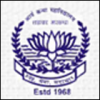Diploma in Fashion Designing - Course, Fees, Eligibility, Top Colleges, Top Careers
Course Description
Diploma in Fashion Designing course is offered as a prologue to how apparel is collected. Understudies figure out how cut, texture, creases and different parts of development meet up to make a bit of garments. Understudies can pick up hands-on involvement in modifying examples and concentrate how slight changes in examples can create special articles of clothing.
All about Diploma in Fashion Designing
A Diploma in Fashion Design is an educational program that provides students with the necessary skills and knowledge to enter the field of fashion design. The diploma curriculum typically covers various subjects related to fashion, design principles, garment construction, textiles, and industry-specific software. Here's an overview of what you can expect from a Diploma in Fashion Design:
- Curriculum: The diploma program's curriculum is designed to offer a comprehensive understanding of fashion design. It includes courses on design theory, fashion illustration, pattern making, draping, garment construction, textiles, fashion history, and fashion business.
- Fashion Illustration: Students learn to sketch and illustrate their designs on paper. Fashion illustration is essential for conveying design concepts and visually bringing creative ideas to life.
- Pattern Making and Garment Construction: The diploma covers the technical aspects of fashion design, teaching students how to create patterns and construct garments from scratch. Understanding pattern-making is crucial for translating design ideas into tangible clothing pieces.
- Textiles and Fabrics: Students learn about different types of fabrics, their properties, and their applications in fashion design. Understanding textiles helps designers make informed decisions about fabric choices for their designs.
- Fashion Technology: Diploma programs often include training in relevant fashion software, such as Adobe Illustrator or CorelDRAW, essential tools for designing and creating technical sketches.
- Fashion Shows and Portfolio Development: Some diploma programs may allow students to participate in fashion shows or design exhibitions. A portfolio showcasing their best work is essential for aspiring designers to present their skills to potential employers or clients.
- Industry Exposure: Some diploma programs collaborate with fashion companies or offer internships, providing students real-world experience and exposure to the fashion industry.
- Creative Projects: Students are encouraged to undertake creative projects, exploring their design ideas and experimenting with different techniques and materials.
- Practical Workshops: Hands-on workshops and practical sessions are integral to the learning process, allowing students to apply theoretical knowledge in a practical setting.
- Career Opportunities: Upon completing the diploma, graduates can explore various career paths in the fashion industry, such as fashion designer, assistant designer, fashion illustrator, pattern maker, fashion merchandiser, or fashion entrepreneur.
- Further Education: A diploma in fashion design can serve as a foundation for pursuing higher studies in fashion or related fields, such as a Bachelor's degree in Fashion Design or Fashion Merchandising.
Why Pursue a Diploma in Fashion Design?
- Focused Education: A diploma in fashion design provides a focused and specific education in fashion design. The curriculum is tailored to teach students the skills and knowledge required to excel in the fashion industry.
- Practical Training: Diploma programs often offer hands-on and practical training. Students can work on real projects, develop their design portfolios, and gain valuable industry experience, which can be advantageous when seeking employment after completing the diploma.
- Time-Efficient: Compared to a full-fledged degree, a diploma program is typically shorter in duration. This makes it an attractive option for individuals who want to enter the fashion industry sooner and start their careers quickly.
- Cost-Effective: Pursuing a diploma can be more affordable than a degree, making it accessible to a broader range of students. It allows aspiring fashion designers to gain foundational knowledge without substantial student loan debts.
- Industry Connections: Diploma programs often have ties with the fashion industry and may offer networking opportunities, internships, or collaborations with fashion companies. These connections can be valuable when seeking job placements or launching a career.
- Creative Expression: Fashion design is an outlet for creative expression, and a diploma program provides an environment for students to explore their artistic vision and develop their unique design style.
- Entry-Level Job Opportunities: A diploma in fashion design can open doors to entry-level positions in the fashion industry, such as assistant designer, fashion illustrator, pattern maker, or stylist. These positions serve as a stepping stone for building a successful career in fashion.
- Entrepreneurial Pursuits: For those aspiring to start their fashion label or boutique, a diploma in fashion design can provide the necessary knowledge and skills to understand the industry, design clothing, and manage a fashion business.
- Foundation for Further Education: While a diploma offers a comprehensive education in fashion design, it can also serve as a foundation for those who wish to pursue higher studies later. Students can continue their education by enrolling in a degree program in fashion or related fields.
Eligibilty
The candidate should have completed Bachelor’s Degree in any faculty or discipline from a recognized university with Minimum of 50% marks in aggregate. Many colleges conduct Entrance exams for admission to this course.
Colleges




